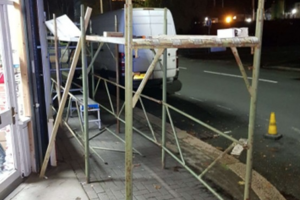Practitioner viewpoint- December 23
Since the pandemic we have seem many adaptations that are now fixed into the ‘new normal’. Louise Ward explores some of these.

DO YOU remember what the sandwich choice in M&S was like before the pandemic? There were dozens of filling options, and multiple variations on each meat, fish, dairy or vegan theme. But why have so many not returned? In the immediate aftermath of lockdown there was obviously much less demand as far fewer people were traveling, working in central locations or meeting face to face. As work patterns have returned to a more normal footing, the sandwich range has increased slightly, but it’s certainly not returned to it’s original level. Why? I suspect because people have got used to having fewer options, and for the retailer fewer options means less waste and lower costs.
So what other pandemic adaptations have become quietly fixed into the ‘new normal’ I wonder?
The media make much of the impact the flexible working is having on peer support, and particularly informal on learning for newer members of the workforce. With fewer people routinely attending a fixed workplace on a standard schedule, there is less opportunity for learning by watching, and through regular interaction with more experienced colleagues. There is less informal social interaction too, and again much has been made of the reported deterioration in mental wellbeing associated with changes to social patterns.
But what about operational staff? Many of whom continued working all the way through the pandemic, adapting normal working practices so that they could help to keep the country running. Has work returned to normal for them? And has there been a negative impact associated with the adaptations that had to be made?
Typically, pre-pandemic recruitment, onboarding and initial training for front line and operational staff would have been face to face, in person, and would have been followed by a period of mentoring, buddying or supervised working. None of this was possible whilst we had to observe strict restrictions to reduce the spread of COVID, so most businesses adapted, using technology, online learning and remote support to fill the gap. On the face of it this was really successful, and allowed businesses to continue to operate core services throughout the pandemic.
But this was a fundamental change of some of the core processes introduced to control safety risk in such organisations, and I wonder how many have since gone back to evaluate whether these adaptations have negatively impacted safety performance among the affected groups?
What about ongoing assessment and competence development for safety critical staff in operational roles? Again, the traditional face to face methods employed for task observation and coaching were just not possible for many months. Alternative remote condition monitoring was substituted, but how has this impacted competence and safety in these key groups of workers?
And now that we are fully settled in the ‘new normal’ have these important processes returned to pre-pandemic format, remained as adapted, or adopted a new hybrid style? Where changes do remain, have businesses properly evaluated the risk of the change? Or has it passively become established just like the reduced sandwich range?
Three and a half years on form the first lockdown most businesses have completed the lessons learned evaluations of the way in which they managed the crisis, adjusted their risk registers and contingency plans ready to face the next challenge. But the more long term effects of COVID adaptations in the workplace have not necessarily been identified, evaluated or mitigated as yet.
Perhaps it’s time to dust off your management of change process, and deep dive into your KPI data, to ensure that control of underlying safety risk is still robust and not has not been undermined by passive adoption of adaptations into the ‘new normal’.
Louise Ward is safety & sustainability director at G&W UK – Safety. For more information, visit www.gwrr.co.uk
HSM publishes a weekly eNewsletter, delivering a carefully chosen selection of the latest stories straight to your inbox.
Subscribe here





